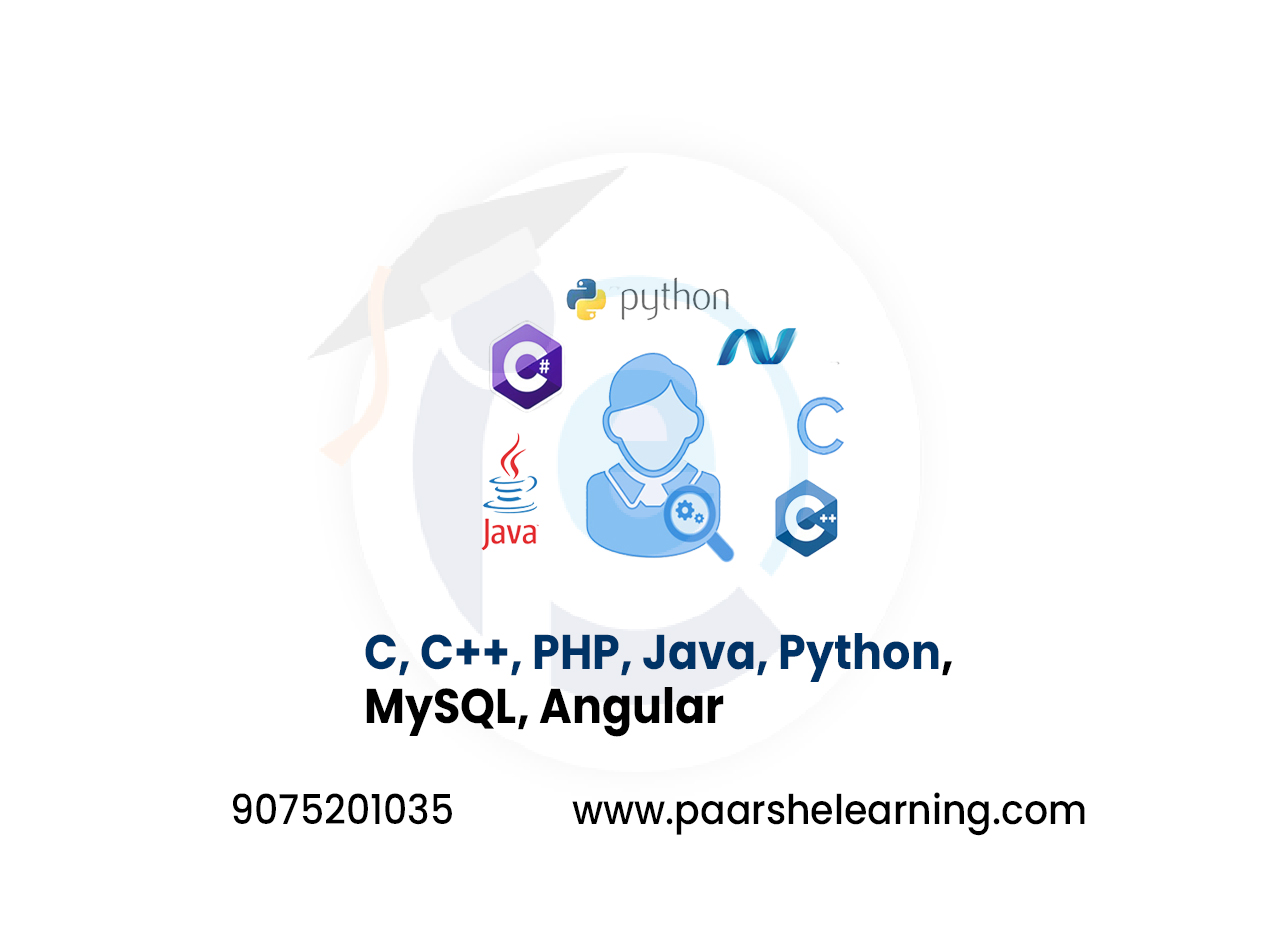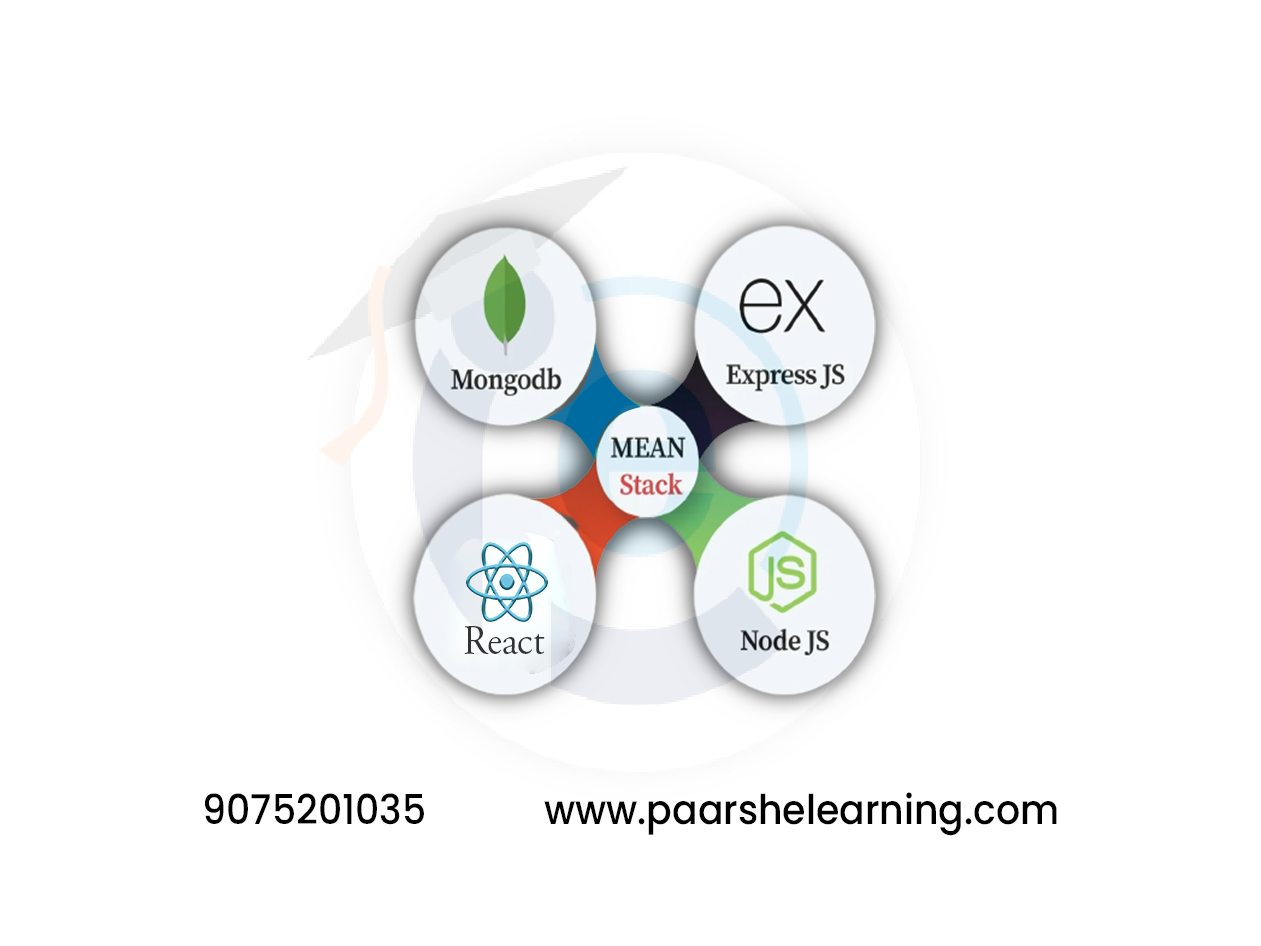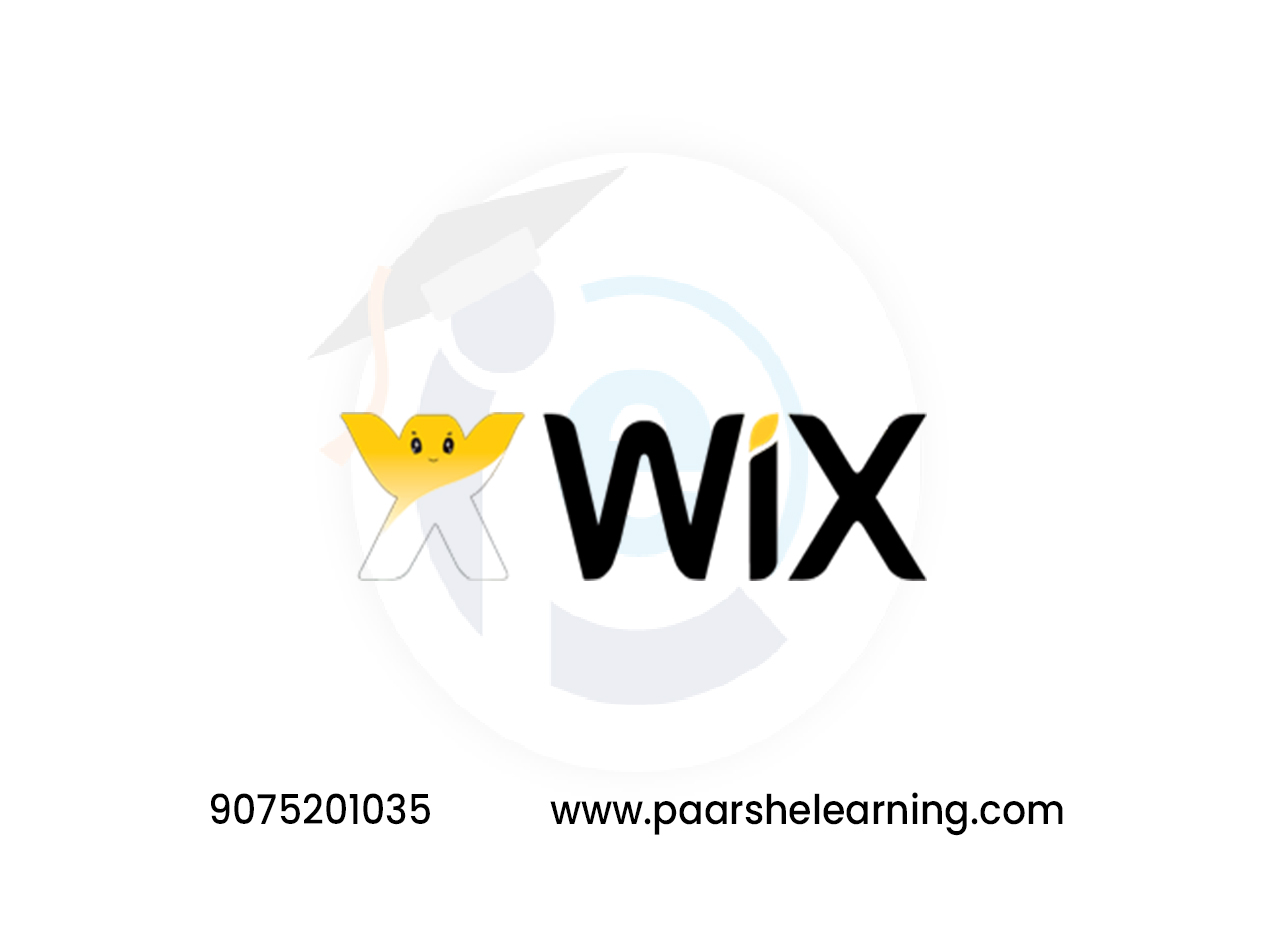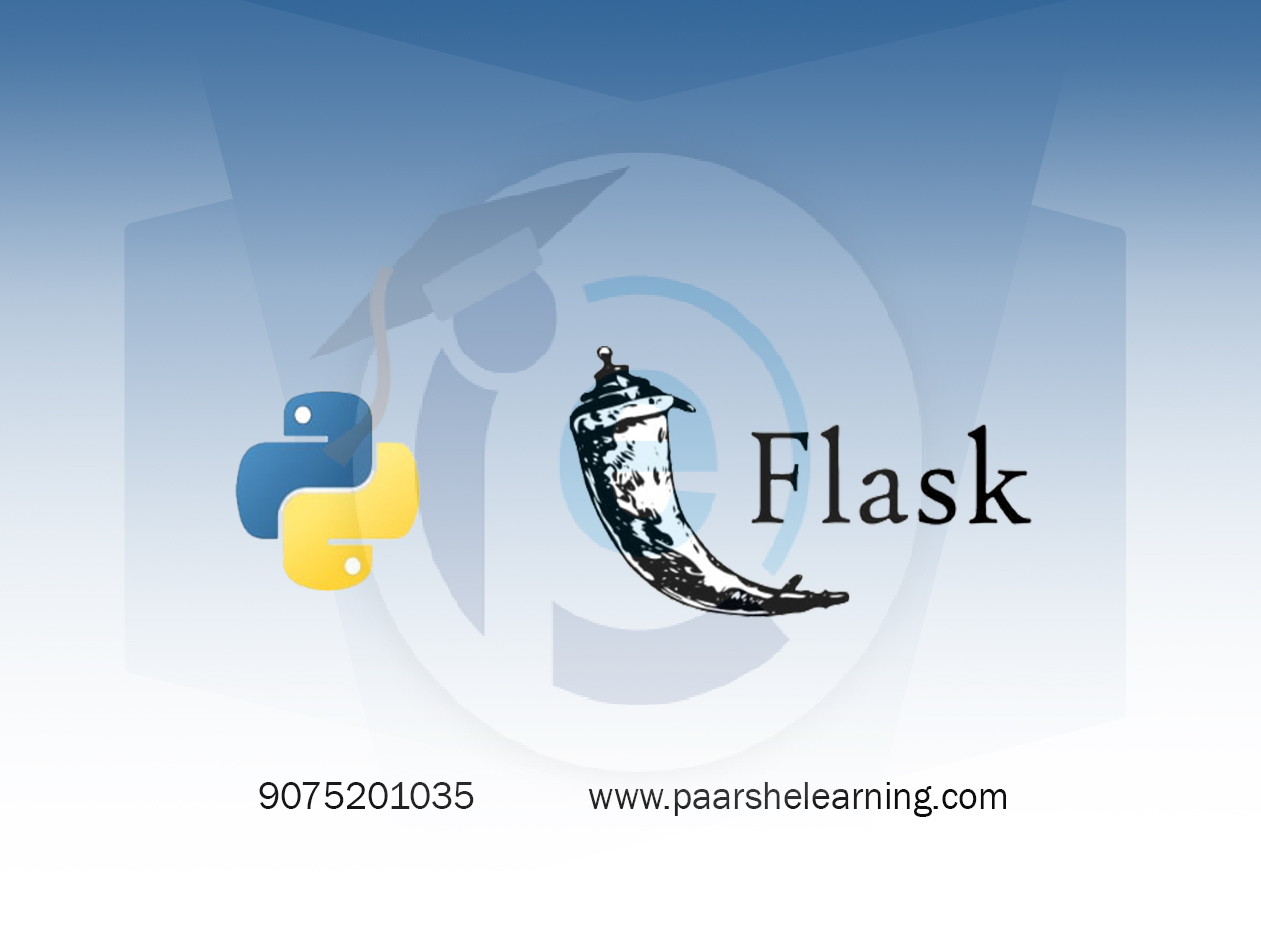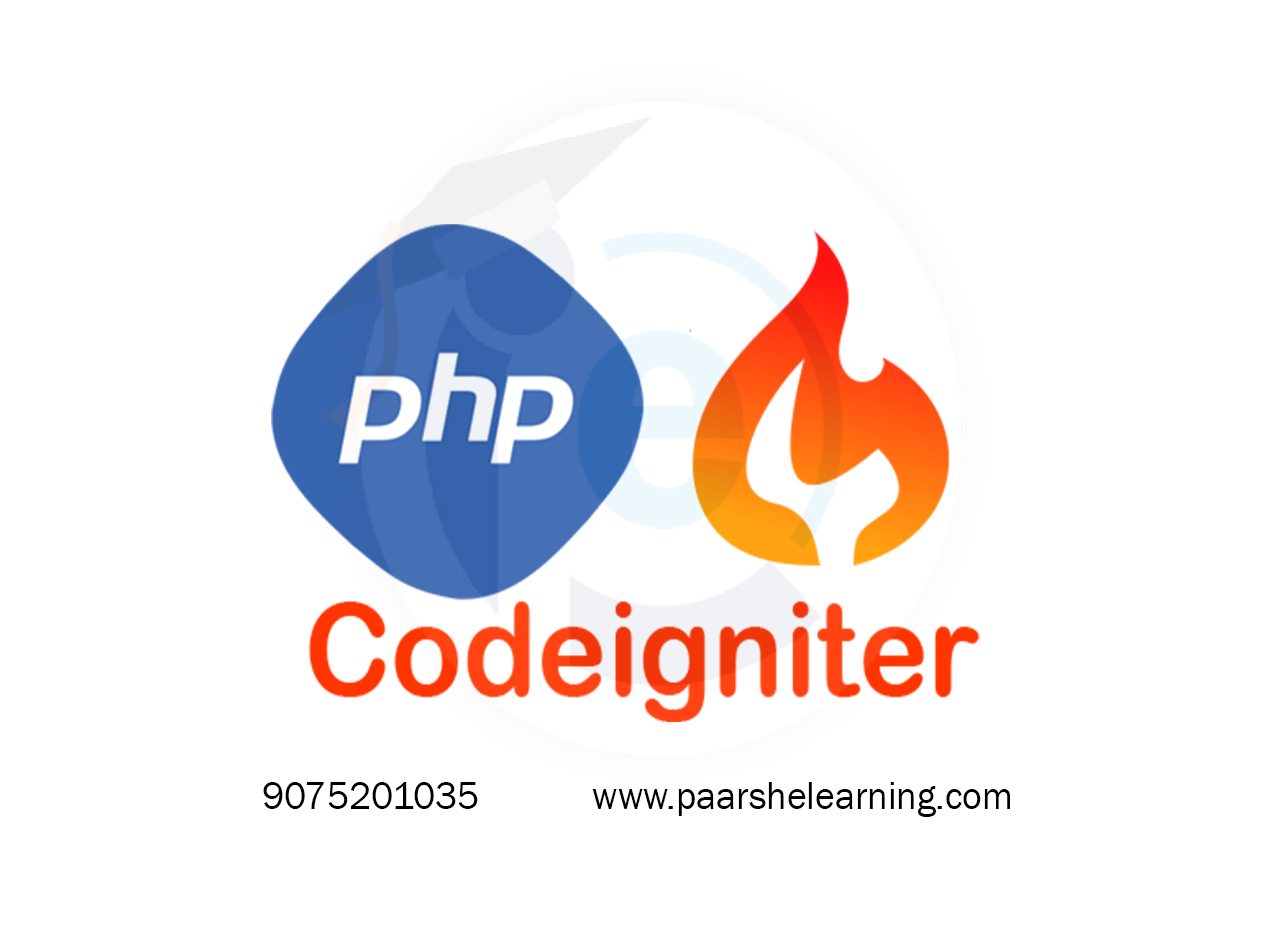- Understanding the basics of web technologies: HTML, CSS, and JavaScript Introduction to server-side programming with PHP, Java, and Python Overview of databases and MySQL
- Introduction to Angular Basics of Angular components, templates, and data binding Styling with CSS and Bootstrap Introduction to AJAX and JQuery
- Understanding server-side programming with PHP, Java, and Python Introduction to C and C++ programming languages Basics of Object-Oriented Programming (OOP) in C++, Java, and Python Introduction to MySQL and database design
- Understanding how to integrate the front-end and back-end with web services and APIs Using popular frameworks for building web applications: Laravel (PHP), Spring Boot (Java), Django (Python), and MEAN (MongoDB, Express.js, Angular, Node.js)
C, C++, PHP, Java, Python, MySQL, Angular
Course description
C, C++, PHP, Java, Python, MySQL, and Angular are all programming languages and tools that are widely used in software development. Here's a brief overview of each:
-
C and C++: C is a general-purpose, procedural programming language used for developing operating systems, device drivers, and other system software. C++ is an extension of C, and it adds support for object-oriented programming. Both C and C++ are widely used in developing applications and software.
-
PHP: PHP is a server-side scripting language used for web development. It is used to create dynamic web pages, manage databases, and build web applications.
-
Java: Java is a general-purpose, class-based, object-oriented programming language used for developing desktop, web, and mobile applications. It is widely used in building enterprise-level applications, server-side applications, and Android mobile applications.
-
Python: Python is a high-level, interpreted, general-purpose programming language that is easy to read and write. It is widely used for web development, scientific computing, data analysis, artificial intelligence, and machine learning.
-
MySQL: MySQL is an open-source relational database management system used for storing and retrieving data. It is widely used in web applications and is compatible with several programming languages, including PHP, Python, and Java.
-
Angular: Angular is a TypeScript-based open-source web application framework used for building dynamic web applications. It is used to build single-page applications and is widely used for developing enterprise-level applications.
To effectively use these tools and programming languages, it is recommended to have a basic understanding of programming concepts, such as variables, data types, control structures, functions, and objects. Familiarity with software development concepts and project management methodologies is also helpful.
What you will learn from this course?
This course includes!
- Daily Live session
- A recorded session with problem-solving material
- Access on Mobile and TV
- Certificate of completion
- Recommendation Letter
- 100% Job Placements
This course is for
- This courses are suitable for beginners who want to learn programming concepts and the C and C++ programming languages, as well as intermediate level programmers who want to deepen their knowledge.
- This course is suitable for anyone who wants to learn web development using PHP
- This course is suitable for beginners who want to learn programming using Java.
- This course is suitable for anyone who wants to learn programming using Python.
- This course is suitable for anyone who wants to learn web development using Angular,
- For PHP, basic knowledge of HTML, CSS, and JavaScript is recommended, as well as familiarity with programming concepts such as variables, data types, control structures, functions, and object-oriented programming.
Prerequisites for this course
- For C and C++, basic programming concepts such as variables, data types, control structures, functions, and pointers are required.
- For PHP, basic knowledge of HTML, CSS, and JavaScript is recommended, as well as familiarity with programming concepts such as variables, data types, control structures, functions, and object-oriented programming.
- For PHP, basic knowledge of HTML, CSS, and JavaScript is recommended, as well as familiarity with programming concepts such as variables, data types, control structures, functions, and object-oriented programming.
- For PHP, basic knowledge of HTML, CSS, and JavaScript is recommended, as well as familiarity with programming concepts such as variables, data types, control structures, functions, and object-oriented programming.
- For PHP, basic knowledge of HTML, CSS, and JavaScript is recommended, as well as familiarity with programming concepts such as variables, data types, control structures, functions, and object-oriented programming.
- For PHP, basic knowledge of HTML, CSS, and JavaScript is recommended, as well as familiarity with programming concepts such as variables, data types, control structures, functions, and object-oriented programming.
C, C++, Php, Java, Python, Mysql, Angular Syllabus
-
Introduction To Programming And C Programming
Overview of programming languages and their roles Introduction to C programming language Variables, data types, operators, and control structures Functions, arrays, and pointers in C
-
Object-oriented Programming And C++
Introduction to object-oriented programming (OOP) concepts Transition from C to C++: classes, objects, and constructors Inheritance, polymorphism, and encapsulation in C++ Memory management and pointers in C++
-
Php Programming
Introduction to PHP scripting language Basic syntax, variables, data types, and operators in PHP Handling forms, user input, and processing data Working with strings, arrays, and functions in PHP
-
Java Programming
Introduction to Java programming language Java syntax, data types, operators, and control structures Object-oriented programming in Java: classes, objects, and methods Exception handling, file I/O, and basic GUI development in Java
-
Python Programming
Introduction to Python programming language Python syntax, data types, operators, and control structures Functions, modules, and libraries in Python Handling files, data manipulation, and basic data visualization
-
Introduction To Mysql Database
Introduction to relational databases and MySQL Creating, querying, and managing databases and tables Inserting, updating, and deleting data using SQL Joins, indexes, and basic database optimization techniques
-
Introduction To Front-end Development And Angular
Overview of front-end web development technologies Introduction to Angular framework and its features Setting up an Angular development environment Creating components, templates, and data binding in Angular
-
Angular Services And Routing
Implementing services for data sharing and business logic Navigating between views using Angular's routing system Introduction to reactive forms for user input handling Styling and theming Angular applications
-
Final Project And Deployment
Students work on a final project that integrates multiple technologies Developing a web application that combines programming languages, database, and Angular Implementing CRUD operations, data retrieval, and display using Angular components Deploying the Angular application to a hosting platform (Netlify, Vercel, etc.)
-
Paarsh E-Learning encourages hands-on practice, assignments, and projects throughout the course to reinforce students' understanding of programming languages, database management, and web development technologies. Assign practical exercises that involve solving programming problems, building web applications, and integrating various technologies. Cover both theoretical concepts and practical applications to provide a well-rounded learning experience.
